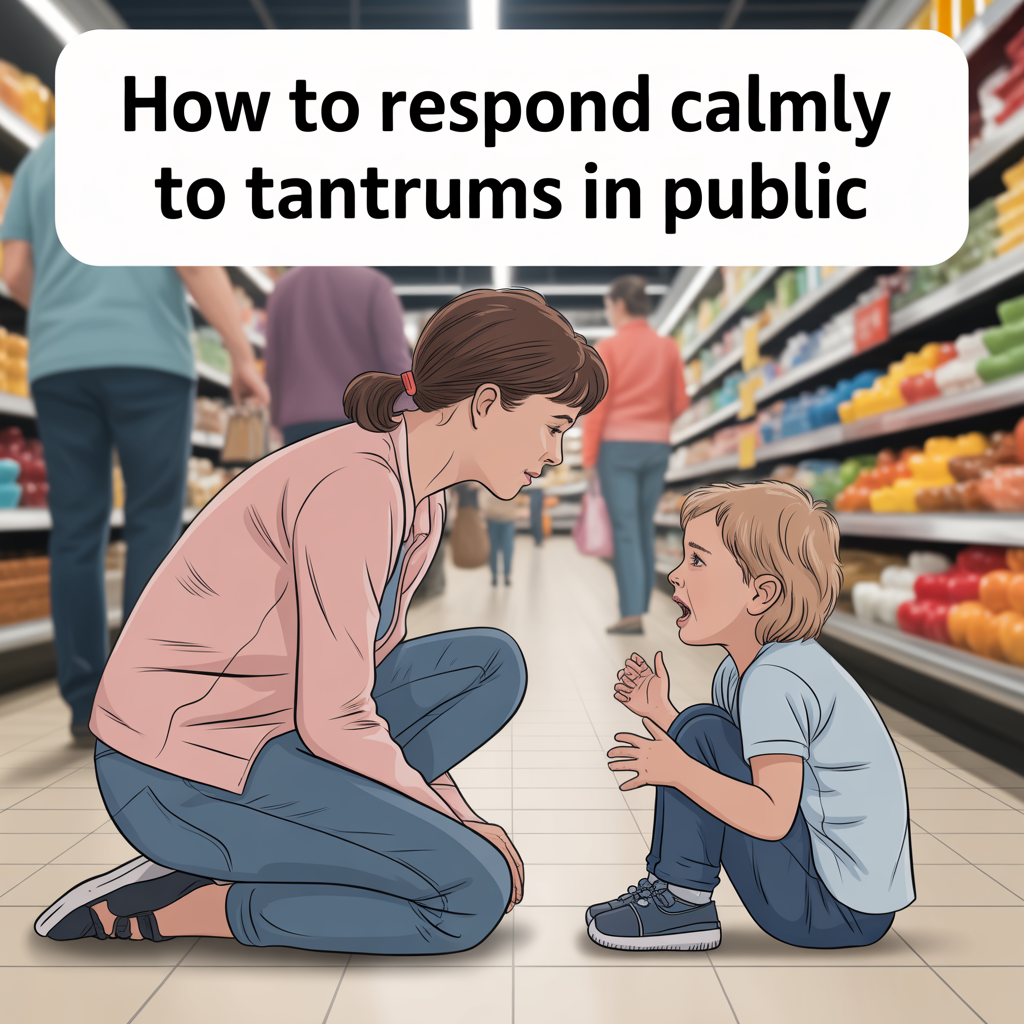Few things test a parent’s patience like a child having a full-blown meltdown in the middle of a grocery store, restaurant, or parking lot. Public tantrums are stressful, not only because of the child’s emotions, but also because of the judgmental looks, unsolicited advice, and pressure to “fix it fast.”
But tantrums—no matter where they happen—are a normal part of childhood. What matters most is how we respond. In this article, you’ll learn how to handle public meltdowns calmly, respectfully, and confidently.
Why Public Tantrums Happen
Tantrums often stem from:
- Overstimulation (noise, lights, crowds)
- Hunger or tiredness
- Frustration or lack of control
- Transition between activities
- Limits or denied requests (e.g., “no candy today”)
Children aren’t misbehaving to embarrass you—they’re struggling to cope with their environment and emotions.
1. Focus on Your Child—Not the Audience
In the middle of a tantrum, your child needs you, not your fear of what others think.
Remind yourself:
- “This is about my child—not about strangers.”
- “Their judgment doesn’t matter. My child’s emotional safety does.”
- “This is normal. I’m not alone.”
Staying focused helps you stay grounded.
2. Get Down to Their Level
Kneel or crouch down to make eye contact. This feels less threatening and more supportive.
Use a calm, gentle voice:
- “You’re really upset right now. I’m here with you.”
- “I see you’re having a hard time. Let’s breathe together.”
Being at their level communicates respect and comfort.
3. Stay Calm and Steady
Your calm is more powerful than any words. If you react with panic, shame, or frustration, the meltdown may escalate.
Practice:
- Deep breathing (out loud so they can hear it)
- A soft tone of voice
- Relaxed body language (no crossed arms or harsh expressions)
You’re modeling emotional regulation in real time.
4. Acknowledge the Emotion (Not the Behavior)
Instead of focusing on what they’re doing, speak to what they’re feeling.
Say:
- “You’re mad because I said no to the toy. That’s really hard.”
- “You’re frustrated that we have to leave now.”
This helps children feel understood—and calms their nervous system.
5. Offer Physical Comfort (If They Want It)
Some children respond well to:
- A gentle hand on their shoulder
- A firm but kind hug
- Holding hands
Others may need space first. Respect their needs:
- “Do you want a hug, or should I sit right here with you?”
Being near them is enough.
6. Move to a Quieter Spot (If Possible)
If safe, calmly guide your child to a quieter, more private area:
- A hallway
- A bench outside the store
- The car
Say:
- “Let’s take a break where it’s quieter.”
- “We can calm down together in a quieter space.”
This can help both of you decompress.
7. Avoid Bribes or Threats
While tempting, saying “Stop crying and I’ll buy it for you” or “If you don’t stop, we’re never going anywhere again” teaches the wrong lesson.
Instead:
- Be consistent with boundaries
- Stay empathetic, not permissive
- Wait until they’re calm to problem-solve
Children learn most from your steadiness, not your stress.
8. Use Fewer Words
In the heat of a meltdown, too many words overwhelm the brain.
Try short, calm phrases:
- “I’m here.”
- “We’ll get through this.”
- “Let’s breathe together.”
Let your tone, presence, and body language do most of the work.
9. Debrief Later—Not During the Tantrum
Once your child is calm, talk about what happened gently:
- “You were really upset in the store. What were you feeling?”
- “Next time, how can we handle it differently together?”
This is when learning happens—not during the emotional storm.
10. Prepare for the Future
You can reduce the likelihood of public tantrums with a few simple habits:
- Keep snacks and water handy
- Avoid errands when your child is hungry or tired
- Give warnings before transitions: “We’ll leave the park in 5 minutes”
- Involve your child in plans: “You can help pick out groceries today!”
Preparation is a powerful prevention tool.
Final Thought: Your Presence Is the Solution
You don’t need perfect words. You don’t need to make it stop immediately. What your child needs most is your calm presence.
Every public tantrum is a chance to show your child that emotions are safe, love doesn’t disappear, and they are not alone in their big feelings.
You’ve got this. And with every meltdown you navigate with grace, you’re raising a child who knows how to manage emotions—because they learned it from you.
